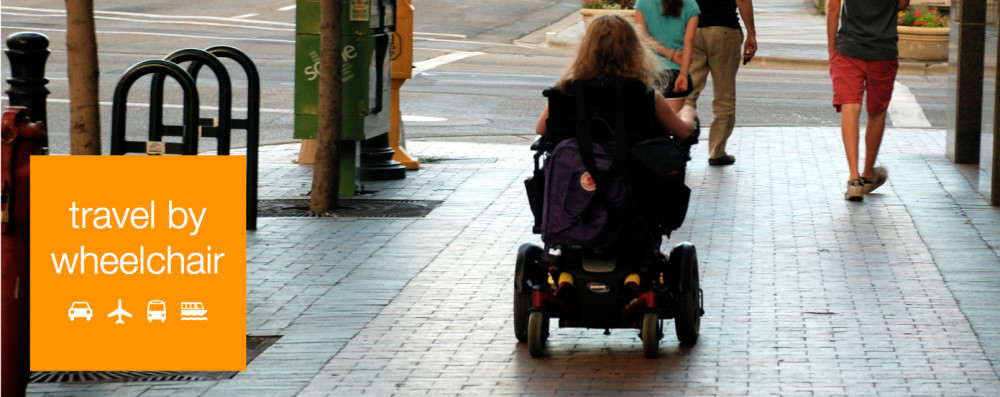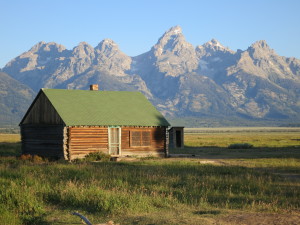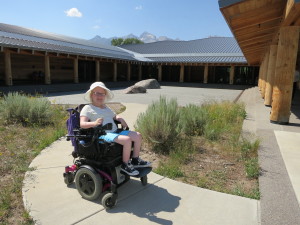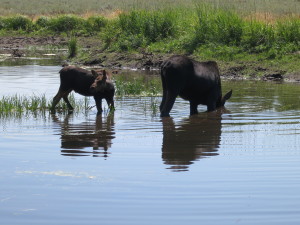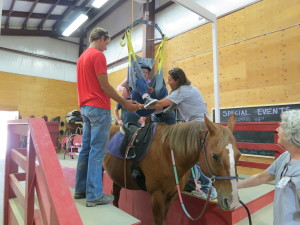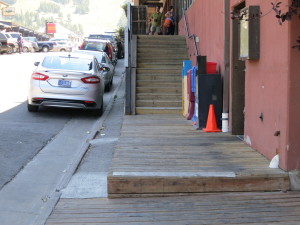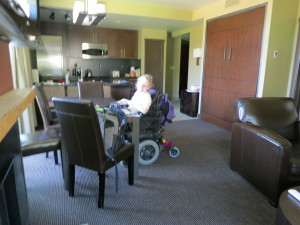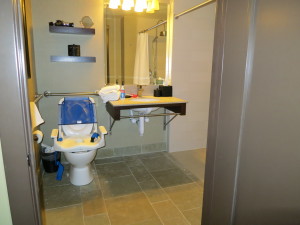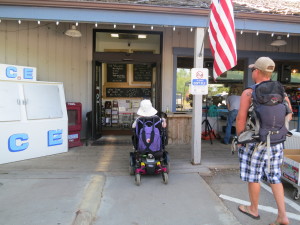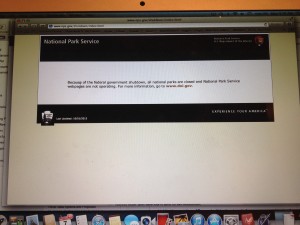 This is one of the many ways a government shutdown hurts.
This is one of the many ways a government shutdown hurts.
If you are a traveller with mobility challenges, the National Park Service is a GREAT way to see our country and to learn our history, our geography, and our flora and fauna. I am passionate about the National Park system in the US. Just ask my husband and kids, who have spent more time in the Civil War parks in Virginia and Pennsylvania than they care to recount, since I am also deeply interested in the Civil War. Lucky us! A two-fer!
When the government reopens, you can hopefully visit the national parks. (Or is it, “hopefully the government will reopen, and then you can visit the national parks?”) If you are a US citizen and have a permanent disability, you can get a free pass to all US national parks; see: http://store.usgs.gov/pass/index.html.
The park that really blew me away this summer was Yellowstone National Park, in Wyoming. It sits astride the Continental Divide and it is so much more than just Old Faithful: it is high plateau, surrounded by mountains, flowing with rivers, rift by canyons and filled with alpine lakes.
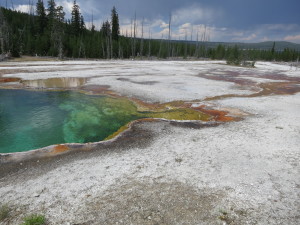 We spent one day driving the lower loop of Yellowstone counter-clockwise (we wanted to end the day with Old Faithful’s almost-every-90-minute eruption). From West Thumb’s visitor center, we viewed West Thumb Geyser Basin, mudpots and fumaroles hissing away beside a quiet lake. The boardwalks looked a little flimsy to support a wheelchair (and we were over very thin crust), but the rangers assured me that they hold the 2,000-pound bison that regularly walk through. Umm, okay then. We gave it a try; and it worked.
We spent one day driving the lower loop of Yellowstone counter-clockwise (we wanted to end the day with Old Faithful’s almost-every-90-minute eruption). From West Thumb’s visitor center, we viewed West Thumb Geyser Basin, mudpots and fumaroles hissing away beside a quiet lake. The boardwalks looked a little flimsy to support a wheelchair (and we were over very thin crust), but the rangers assured me that they hold the 2,000-pound bison that regularly walk through. Umm, okay then. We gave it a try; and it worked.
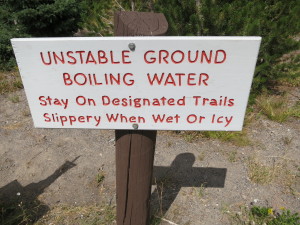
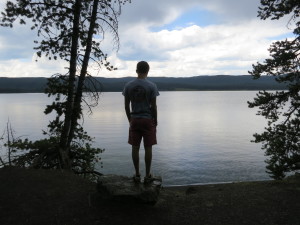 The ranger gave us an ADA guide to the entire park, which was thorough and helpful; we used it to find the right spot (Gull Point) to unpack our pick-a-nick basket (couldn’t resist a little Jellystone reference) along the western shores of Yellowstone Lake. Continued on past the Fishing Bridge and LeHardy’s Rapids to Mud Volcano and Black Dragon’s Caldron – so eerie, all that bubbling going on just underneath your feet! Not all of this boardwalk area is accessible, but quite a bit of it is. We relied heavily on that ADA-guide.
The ranger gave us an ADA guide to the entire park, which was thorough and helpful; we used it to find the right spot (Gull Point) to unpack our pick-a-nick basket (couldn’t resist a little Jellystone reference) along the western shores of Yellowstone Lake. Continued on past the Fishing Bridge and LeHardy’s Rapids to Mud Volcano and Black Dragon’s Caldron – so eerie, all that bubbling going on just underneath your feet! Not all of this boardwalk area is accessible, but quite a bit of it is. We relied heavily on that ADA-guide.
We passed through big herds of bison (walking on the road, rolling in the dust, and 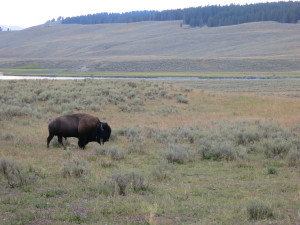 tramping through the water) in Haydn Valley on our way to Artist’s Point, on the south rim of Yellowstone’s “Grand Canyon” (pretty grand and not to be confused with the other Grand Canyon); from here you have a gorgeous view of Yellowstone River, and it’s a short drive to the Canyon Village Visitor Center.
tramping through the water) in Haydn Valley on our way to Artist’s Point, on the south rim of Yellowstone’s “Grand Canyon” (pretty grand and not to be confused with the other Grand Canyon); from here you have a gorgeous view of Yellowstone River, and it’s a short drive to the Canyon Village Visitor Center.
Although we had to whizz past the Norris Geyser Basin area and Grand Prismatic Spring in order to make the end-of-the-day (for us) Old Faithful blow at 6:30 pm, it seems that many of the scenic spots or short walks to geysers, mudpots and fumaroles are wheelchair-accessible (generally the shorter paths). We made it to Old Faithful, and we even got prime seating up front. I imagine this is because we were so late in the day!
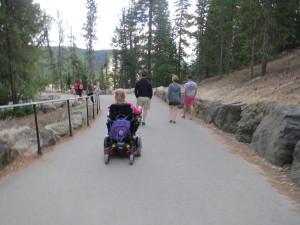 Yellowstone has so much to offer the slow-walker or wheelchair user: its myriad pull-outs and short paths invite long days of wandering the roads by car, stopping at your whim to get out or just to watch the wildlife pass you by. The terrain is beautiful whether you’re hiking it, rolling down a path, or viewing it from your car window. There are multiple visitor centers (almost always accessible) with ranger programs and tons of information. With advance planning, you can rent wheelchair-accessible rooms at lodging run by the National Park Service right within the park (although you probably need to plan ahead by at least 6 months).
Yellowstone has so much to offer the slow-walker or wheelchair user: its myriad pull-outs and short paths invite long days of wandering the roads by car, stopping at your whim to get out or just to watch the wildlife pass you by. The terrain is beautiful whether you’re hiking it, rolling down a path, or viewing it from your car window. There are multiple visitor centers (almost always accessible) with ranger programs and tons of information. With advance planning, you can rent wheelchair-accessible rooms at lodging run by the National Park Service right within the park (although you probably need to plan ahead by at least 6 months).
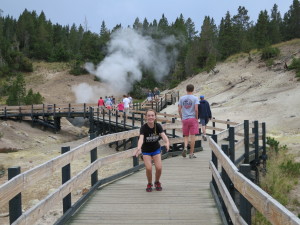 The current closing of the national park system is one of many ways ordinary Americans (and visitors to our country) are affected by the inability of our government to function smoothly as a democracy. People come from far and wide to see the range of beauty that America has on display in these parks. Our national parks and monuments are a shining example of the some of the best things our country has to offer. I close with a quote from Paul Schullery, a historian and writer who has written deeply on conservation at Yellowstone National Park (from National Geographic’s 6th edition Guide to the National Parks of the United States, page 7).
The current closing of the national park system is one of many ways ordinary Americans (and visitors to our country) are affected by the inability of our government to function smoothly as a democracy. People come from far and wide to see the range of beauty that America has on display in these parks. Our national parks and monuments are a shining example of the some of the best things our country has to offer. I close with a quote from Paul Schullery, a historian and writer who has written deeply on conservation at Yellowstone National Park (from National Geographic’s 6th edition Guide to the National Parks of the United States, page 7).
“..As the science of ecology matured…we began to realize that everything in the park was interrelated. We seek to save the whole thing, the whole creeping, flying, grazing, preying, photosynthesizing, eroding, raining, erupting, evolving scene. Call it wildness…or an ecosystem, or whatever you like, it is this entangled collection of processes that we must save. That means many things, some of which haven’t been easy to hear. It means that people like me, who love to fish, have to leave enough trout in the streams to feed the otters, pelicans, bears, and other wild fishermen. It means we don’t pick flowers, or collect rocks, removing them from their place in the natural system. These great parks…are laboratories or ideas, offering profound lessons in the natural way of things…”
Lessons, I think, that can apply equally to the “creeping, flying…erupting, evolving scene” which is our human world of interactions, both individual and societal. Everything we do has an impact on something else in our system, our world.
Something to think about, as our legislators seem to so cavalierly propel us from government shutdown to looming default on our national debt.
